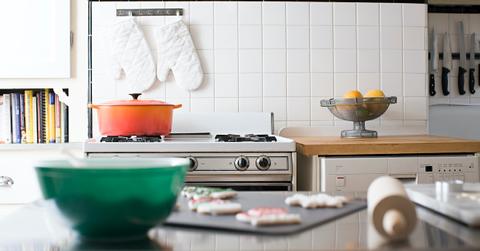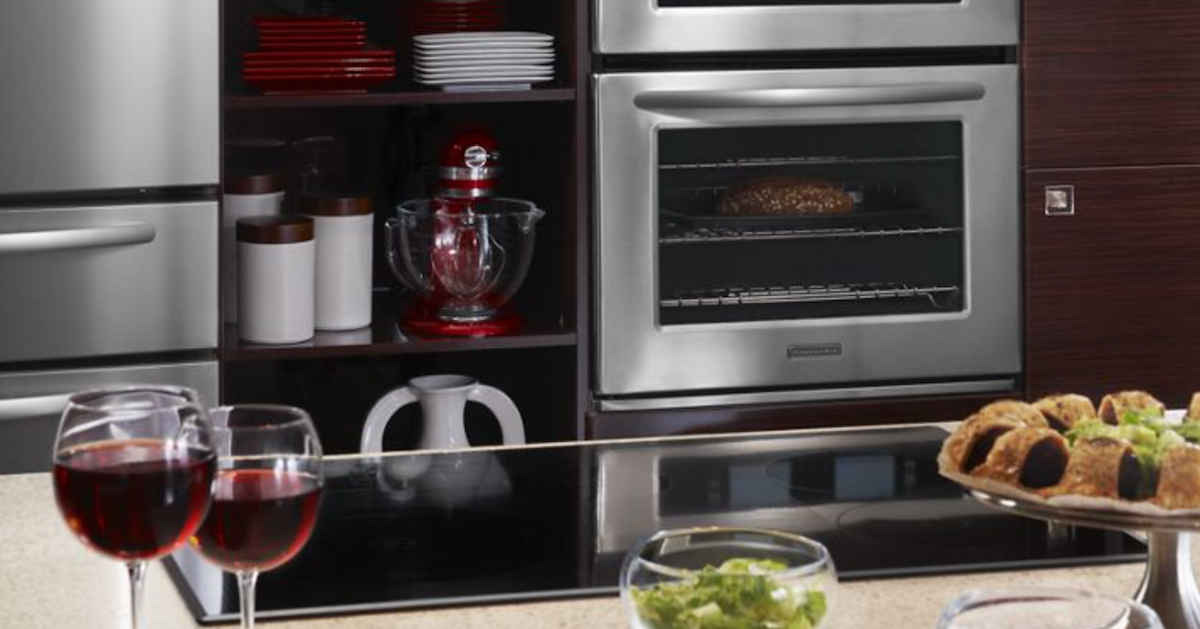What Is Magnetic Induction Cooking? Behind the Low-Impact Culinary Trend
Published Dec. 30 2020, 2:44 p.m. ET

As society starts to shift away from relying on fossil fuels to electric energy, it's absolutely vital that we look at our energy usage holistically. The transition to various forms of electric transportation seems to be within arm's reach, but straying away from using gas at home — particularly in the kitchen — looks a little less definitive, as electric stoves can be difficult to use in terms of time efficiency and temperature control. So, is there another option, aside from gas cooking?
Keep reading for a relatively common culinary technique called magnetic induction cooking, which hasn't quite made its way to the U.S. yet. It could seriously revolutionize our environmental impact in the kitchen.

A magnetic induction cooktop from Kitchen Aid.
Here's how magnetic induction cooking saves energy:
Although the concept of magnetic induction cooking isn't utilized on a global scale at this point, they have been around for many years, and are heavily used in certain countries. It was first publicly demonstrated at the Chicago World's Fair in 1933, according to The Conversation, and has become relatively popular across Asia and Europe. While induction stovetops are not a mainstay in U.S. home kitchens, portable versions are popular among recipe developers and YouTubers — you've probably seen these stovetops used in BuzzFeed's "Tasty" videos.
Magnetic induction cooking involves using a stovetop that heats up with electromagnetic energy. The electromagnetic fields essentially spread through wire coils embedded across the cooktop, which reacts with special iron and nickel-wired pots and pans. The pans absorb the magnetic field energy with magnetic resistance, which is how it produces heat, instead of using thermal energy by heating the surrounding air.
As per Apex Magnets, the energy transfer of magnetic induction cooking is incredibly efficient, with minimal waste. One brand, called the Tesla Coil, is 84 percent energy efficient, compared to gas or thermal energy, which is 74 percent energy efficient. To see how it works, check out the video, below.
Is magnetic induction cooking safer than electric stovetop cooking?
In some ways, yes. Magnetic induction cooktops operate at a high magnetic field frequency, about 24 kilohertz (kHz), and lower users' risk of burning themselves. According to Rational Kitchen, this is because in order to heat up, magnetic induction cooktops require something that absorbs the magnetic fields — such as the nickel or iron-wired pots and pans. Basically, they don't heat significantly without the reaction from the iron or nickel pots.
However, as per Rational Kitchen, electromagnetic fields have a possible (but not yet proven) link to carcinogens, based on a 1980 study that classifies them as a 2b carcinogen by the International Agency for Research on Cancer (IARC). They are possibly carcinogenic to the human body, however, that is yet to be confirmed.
Convenience-wise, magnetic induction cooking is superior. In addition to the cooktop's ability to heat and cool quickly, it's also quite easy to maintain. Cleaning-wise, it's also more efficient than other stoves, as most magnetic induction cooktops are made of glass or ceramic, as per Consumer Reports.
Full-size magnetic induction cooktops are, however, more expensive than traditional ones (though the small, portable ones can be pretty affordable). Not to mention, you'll need to purchase induction stovetop-safe pots and pans to use with a magnetic induction stovetop. Therefore, until they're available at lower prices, we'll have to make sure we're cooking with energy in a conservative manner, and utilizing green kitchen practices — get those indoor composts ready, and prepare those kitchen scrap gardens.